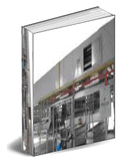Manufacturer: I came across your blog site and have looked at it with great interest, and am wondering whether you would be willing to assist me with some basic information please.
I would like to bind shavings or crumbs of a vulcanized NR compound, to shape and use in a dynamic application. Is it possible to use pre-vulcanised NR latex? Would the adhesion be sufficient, and would it hold together after many cyclical deformations and at temperatures of up to 60 degrees C? (By the way the crumbed compound is formulated to provide high resilience, low CS and low heat build-up).
Conventional moulding of the unvulcanised NR compound is problematic in the application of interest, hence my enquiry.
Also, is it possible to add extra heat stabilizer, e.g. TMQ?
Another possibility is to use a polyurethane binder. However, I like the idea of using NR due to its good dynamic properties. Maybe it is also more cost-effective?
Any assistance regarding the above would be greatly appreciated.
John Woon (Senior Latex and Rubber Consultant): Thanks for visiting my site.
Prevulcanised latex (PV) as a binding agent for rubber crumbs has been used successfully for "static" application.
In a dynamic application as in your case, the adhesion between the crumbs might not last long especially when the service temperature is elevated.
The PV itself must be designed to have an inherently good heat ageing resistance otherwise even the addition of a heat stabilizer such as TMQ might not be sufficient although it might help to some extent.
If flexibility is not an issue, you could try adding some quantity of Portland cement but the PV must be well
stabilised with non-ionic surfactant before the addition.



















































.jpg)
.jpg)



.jpg)
.jpg)
.jpg)
.jpg)
.jpg)
.jpg)
.jpg)
.jpg)
.jpg)
.jpg)
.jpg)
.jpg)
.jpg)
.jpg)
.jpg)
.jpg)
.jpg)
.jpg)













































0 Comments:
Post a Comment
<< Home